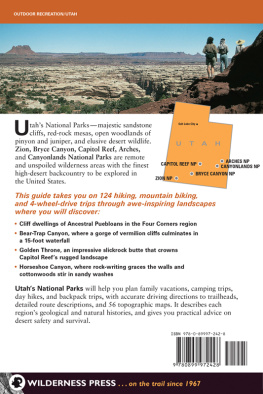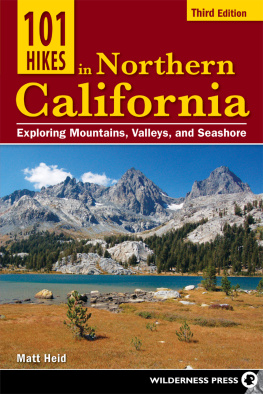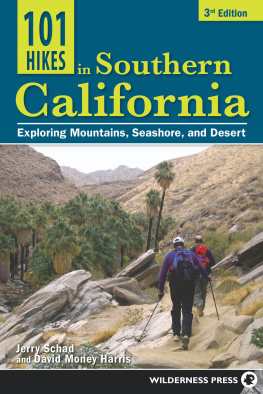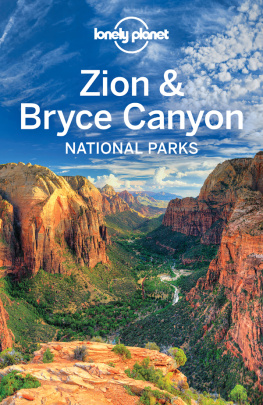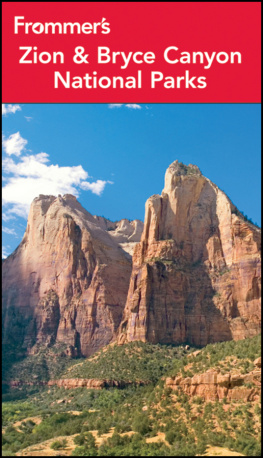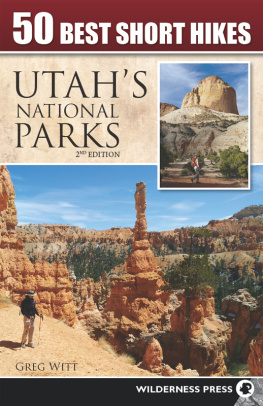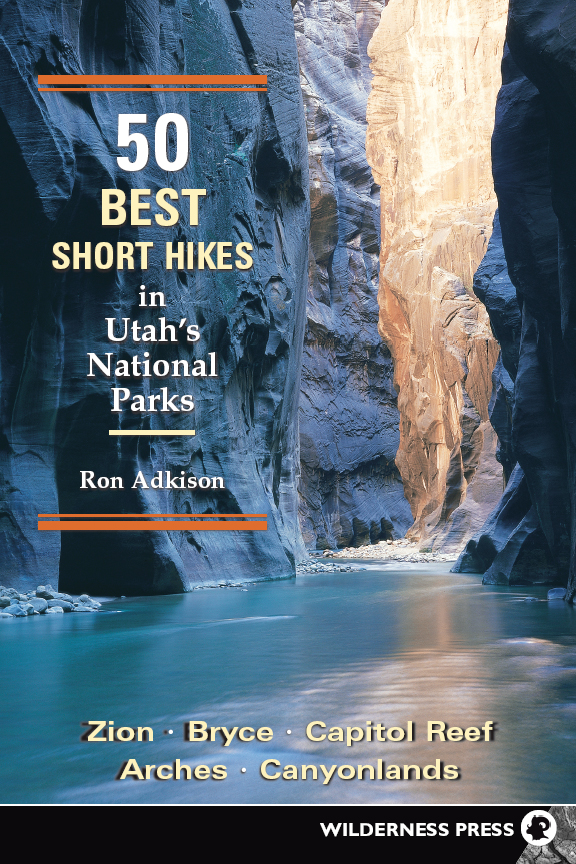
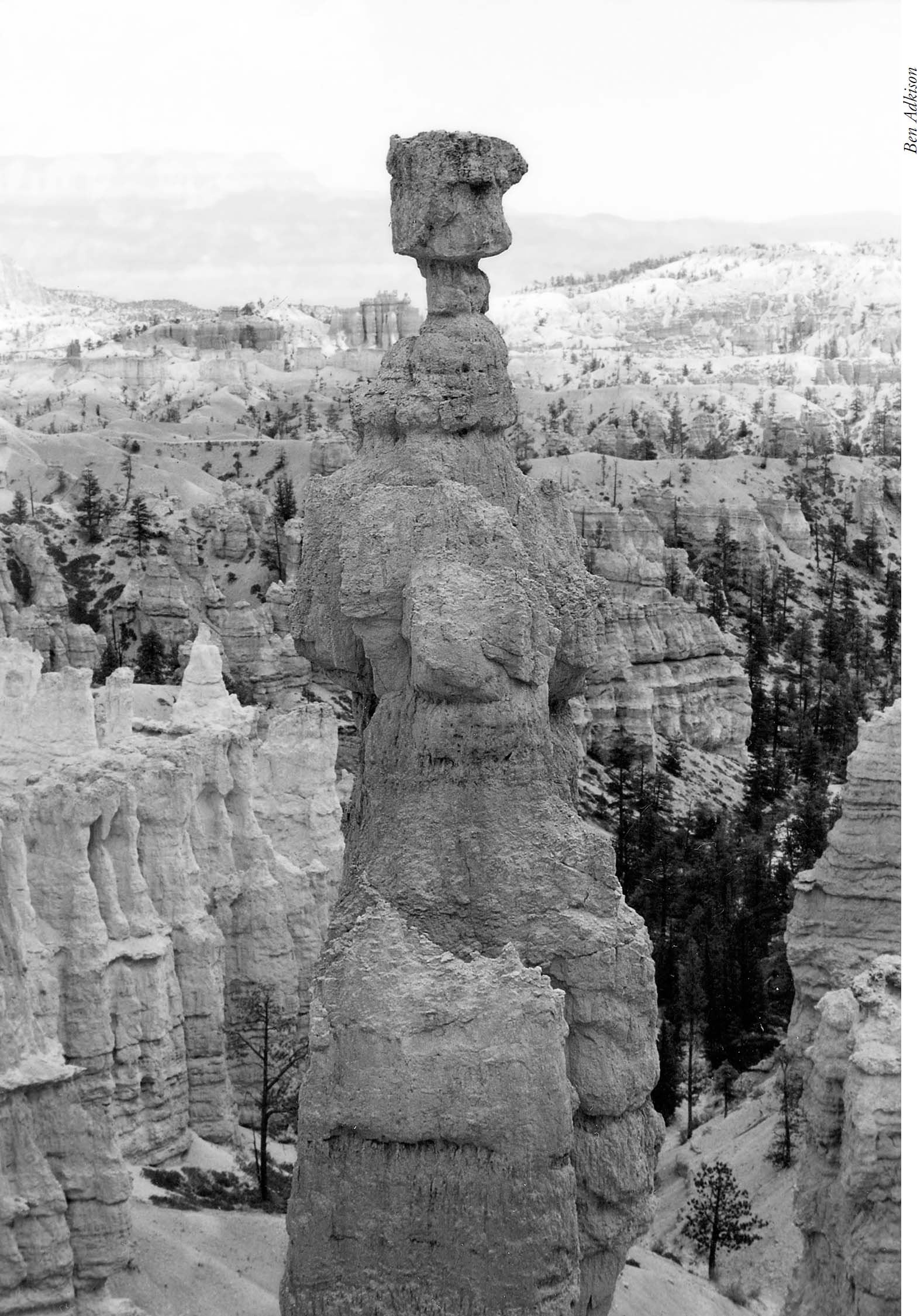
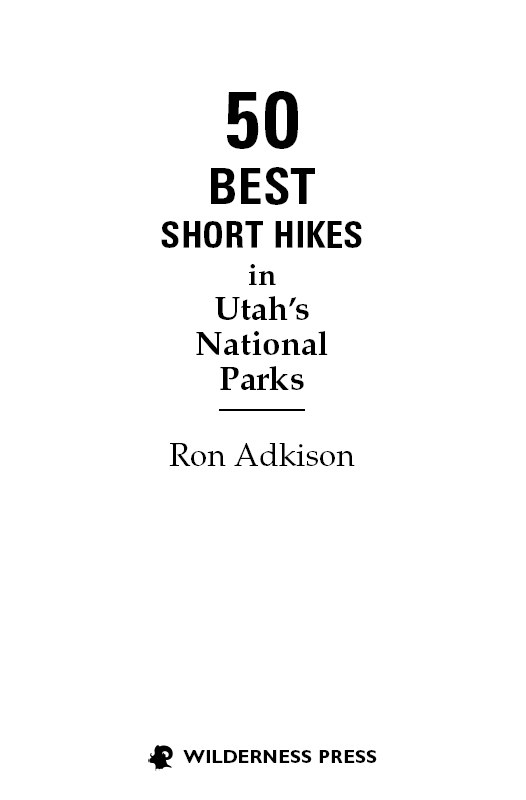
50 Best Short Hikes in Utahs National Parks: Zion, Bryce, Capitol Reef, Arches, Canyonlands
1st EDITION August 2001
5th printing 2011
Copyright 2001 by Ron Adkison
Front cover photo copyright 2001 by Tom Till
Back cover photos copyright 2001 by Ron Adkison
Interior photos, except where noted, by Ron Adkison
Maps: Anthony McDemas at Design Maps
Cover design: Larry B. Van Dyke
Book design: Kathy Morey
ISBN: 978-0-89997-260-2
Library of Congress Card Number: 2001045321
Manufactured in the United States of America
Published by: Wilderness Press
c/o Keen Communications
P.O. Box 43673
Birmingham, AL 35243
info@wildernesspress.com
www.wildernesspress.com
Visit our website for a complete listing of our books and for ordering information.
Distributed by Publishers Group West
Cover photos: The Zion Narrows, Zion National Park (front); Hickman Bridge, Capitol Reef National Park (back, top) Chesler Park, Canyonlands National Park (back, bottom)
Frontispiece: Thors Hammer on Navajo Loop Trail, Bryce Canyon National Park
All rights reserved. No part of this book may be reproduced in any form, or by any means electronic, mechanical, recording, or otherwise, without written permission from the publisher, except for brief quotations used in reviews.
Library of Congress Cataloging-in-Publication Data
Adkison, Ron.
50 best short hikes in Utahs national parks: Zion, Bryce, Capitol Reef, Arches, Canyonlands/Ron Adkison1st ed.
p. cm.
Includes bibliographical references.
ISBN 13: 978-0-89997-260-2
ISBN 10: 0-89997-260-8
1. HikingUtahGuidebooks. 2. National parks and reservesUtahGuidebooks. 3. UtahGuidebooks. I. Title: Fifty best short hikes in Utahs national parks. II. Title.
GV199.42.U8 A35 2001
917.920434dc2l
2001045321
Disclaimer
Hiking in the backcountry entails unavoidable risk that every hiker assumes and must be aware of and respect. The fact that a trail is described in this book is not a representation that it will be safe for you. Trails vary greatly in difficulty and in the degree of conditioning and agility one needs to enjoy them safely. On some hikes, routes may have changed or conditions may have deteriorated since the descriptions were written. Also trail conditions can change from day to day, owing to weather and other factors. A trail that is safe on a dry day or for a highly conditioned, agile, properly equipped hiker may be completely unsafe for someone else or unsafe under adverse weather conditions.
You can minimize your risks on the trail by being knowledgeable, prepared and alert. There is not space in this book for a general treatise on safety in the mountains, but there are a number of good books and public courses on the subject and you should take advantage of them to increase your knowledge. Just as important, you should always be aware of your own limitations and of conditions existing when and where you are hiking. If conditions are dangerous, or if youre not prepared to deal with them safely, choose a different hike! Its better to have wasted a drive than to be the subject of a mountain rescue.
These warnings are not intended to scare you off the trails. Millions of people have safe and enjoyable hikes every year. However, one element of the beauty, freedom and excitement of the wilderness is the presence of risks that do not confront us at home. When you hike you assume those risks. They can be met safely, but only if you exercise your own independent judgement and common sense.
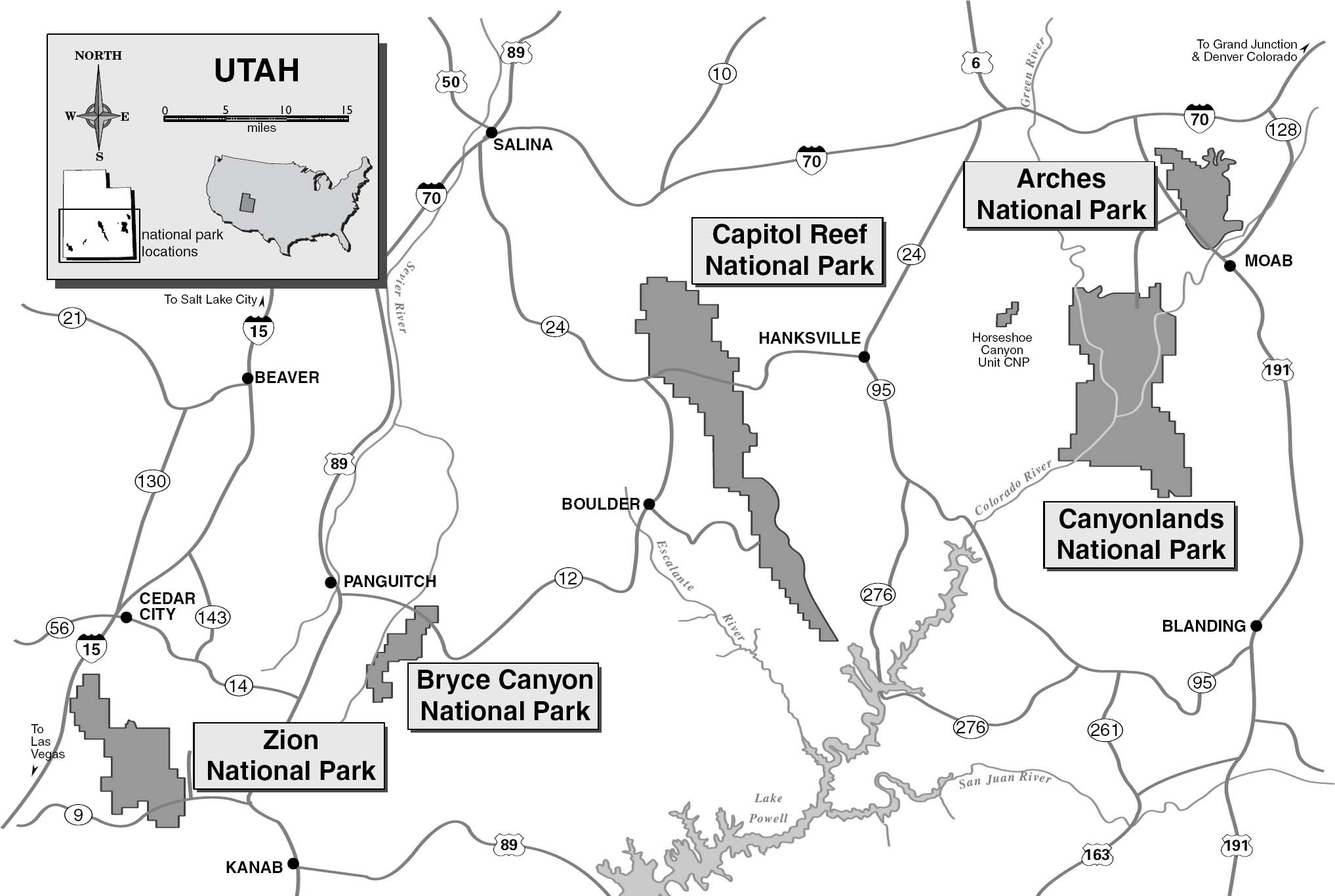
Introduction
Five of perhaps the most magnificent national parks in the nation stretch across the southern third of Utah. These parks embrace some of the finest and most unusual examples of erosional forms on the globe, and they are truly among the wonders of the world. Utahs national parks are a veritable wilderness of stone, and indeed much of the land in each park has been recommended for federal wilderness designation. Many serious hikers, however, shun national parks, believing that such areas are tourist meccas where a wilderness experience is difficult, if not impossible, to have. That may be true for some of our national parks, but not for Utahs. Even in Zion National Park, where annual visitation averages more than two million people (nearly half the total annual visitation to all Utah national parks), the hiker can enjoy magnificent, wild country and a good deal of solitude only a short distance from most any road.
The majority of park visitors spend only a day in each Utah park, viewing the scenery from the comfort of their vehicles as they try to see as much country as a one-to-two-week vacation will allow. This book was written to satisfy the needs of short-term visitorsto help them make the most of their park visit, and to choose the short hike that is best for them. Are there really 50 Best hikes in Utahs National Parks? In the authors opinion, nearly every hike in these parks is the best. The choice of 50 Best is based on the authors years of hiking here, and these hikes, ranging from a short stroll of 0.3 mile to an all-day outing of 10.4 miles, sample some of the finest and most diverse landscapes in each park. All hikes are easily accessible, beginning along primary park roads, and they are all well marked and easy to follow. For visitors with limited time, these parks have a great deal to offer. Much of the parks scenery can be enjoyed from park roadways; numerous short trails, many of them nature trails, offer visitors a chance to stretch their legs, smell the deserts fragrance, feel the wind in their faces, view seemingly endless panoramas and incomparable landscapes, enjoy the delicate blossoms and the perfumes of myriad wildflowers, and observe desert creatures going about their day-to-day lives. Many short trails require no special hiking ability, and some are accessible to handicapped persons in wheelchairs and even to parents pushing baby strollers.
For an extended stay, each park has one or more excellent campgrounds, and some are available to large recreational vehicles. Each park also boasts a visitor center and interpretive activities that include ranger-led hikes and evening-campfire naturalist programs.
Visitors to the majestic landscape of Utahs national parks will enjoy a wide range of scenery, including vast plateaus clothed in cool forests of pine, fir, and aspen; magnificent canyons up to 4000 feet deep; soaring cliffs, some of them sheer and smooth from top to bottom, others broken and fluted with great buttresses and columns; cliff-edged mesas, some capped by stone, others topped by velvety grasslands and pygmy forests of pinyon and juniper; broad desert valleys and sun-baked desert flats; domes, crags, arches and pinnacles of solid stone, colored in nearly every shade of the spectrum.
Diverse species of plants and animals compose another aspect of the scenery in Utahs national parks. They live in delicate balance and are adapted to the rigors of the high desert, where rainfall is scant and undependable, and where temperatures can be excessively hot. This desert country of the Colorado Plateau may seem harsh and unforgiving, inhospitable to human life if not to plants and animals; but humans too have lived and even thrived here for thousands of years. Park visitors will encounter granaries and cliff dwellings of the Ancestral Puebloans (formerly called the Anasazi), rock-writing panels dating back more than 2000 years, old homesteads, cowboy line camps, and even farm equipment.


